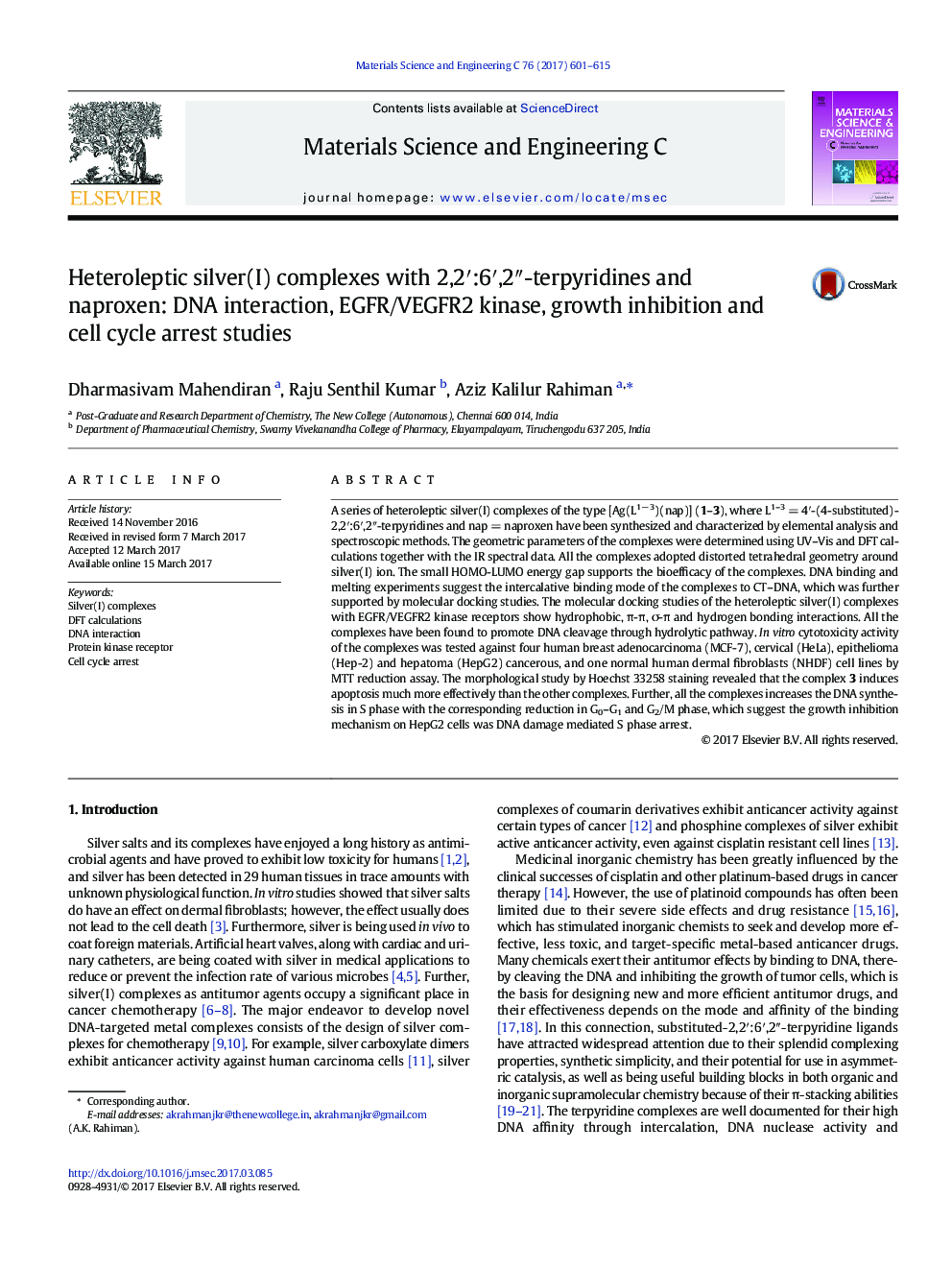| کد مقاله | کد نشریه | سال انتشار | مقاله انگلیسی | نسخه تمام متن |
|---|---|---|---|---|
| 5435154 | 1509145 | 2017 | 15 صفحه PDF | دانلود رایگان |

- Three new heteroleptic silver(I) complexes were synthesized and characterized.
- All the complexes bind to DNA in an intercalative mode.
- Complexes strongly interact with EGFR/VEGFR2 kinase receptors.
- The complexes show enhanced DNA cleavage activity through hydrolytic pathway.
- The complexes exhibited DNA damage mediated S phase arrest.
A series of heteroleptic silver(I) complexes of the type [Ag(L1 â 3)(nap)] (1-3), where L1-3 = 4â²-(4-substituted)-2,2â²:6â²,2â³-terpyridines and nap = naproxen have been synthesized and characterized by elemental analysis and spectroscopic methods. The geometric parameters of the complexes were determined using UV-Vis and DFT calculations together with the IR spectral data. All the complexes adopted distorted tetrahedral geometry around silver(I) ion. The small HOMO-LUMO energy gap supports the bioefficacy of the complexes. DNA binding and melting experiments suggest the intercalative binding mode of the complexes to CT-DNA, which was further supported by molecular docking studies. The molecular docking studies of the heteroleptic silver(I) complexes with EGFR/VEGFR2 kinase receptors show hydrophobic, Ï-Ï, Ï-Ï and hydrogen bonding interactions. All the complexes have been found to promote DNA cleavage through hydrolytic pathway. In vitro cytotoxicity activity of the complexes was tested against four human breast adenocarcinoma (MCF-7), cervical (HeLa), epithelioma (Hep-2) and hepatoma (HepG2) cancerous, and one normal human dermal fibroblasts (NHDF) cell lines by MTT reduction assay. The morphological study by Hoechst 33258 staining revealed that the complex 3 induces apoptosis much more effectively than the other complexes. Further, all the complexes increases the DNA synthesis in S phase with the corresponding reduction in G0-G1 and G2/M phase, which suggest the growth inhibition mechanism on HepG2 cells was DNA damage mediated S phase arrest.
50
Journal: Materials Science and Engineering: C - Volume 76, 1 July 2017, Pages 601-615